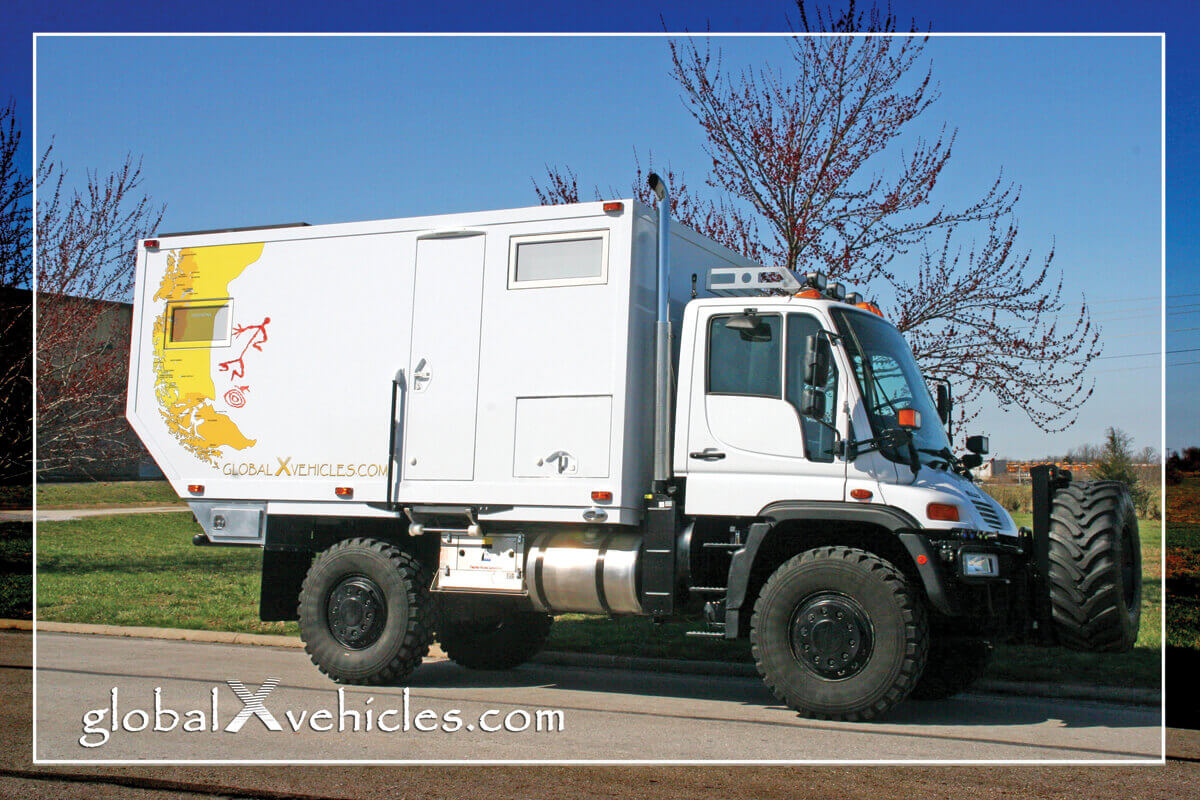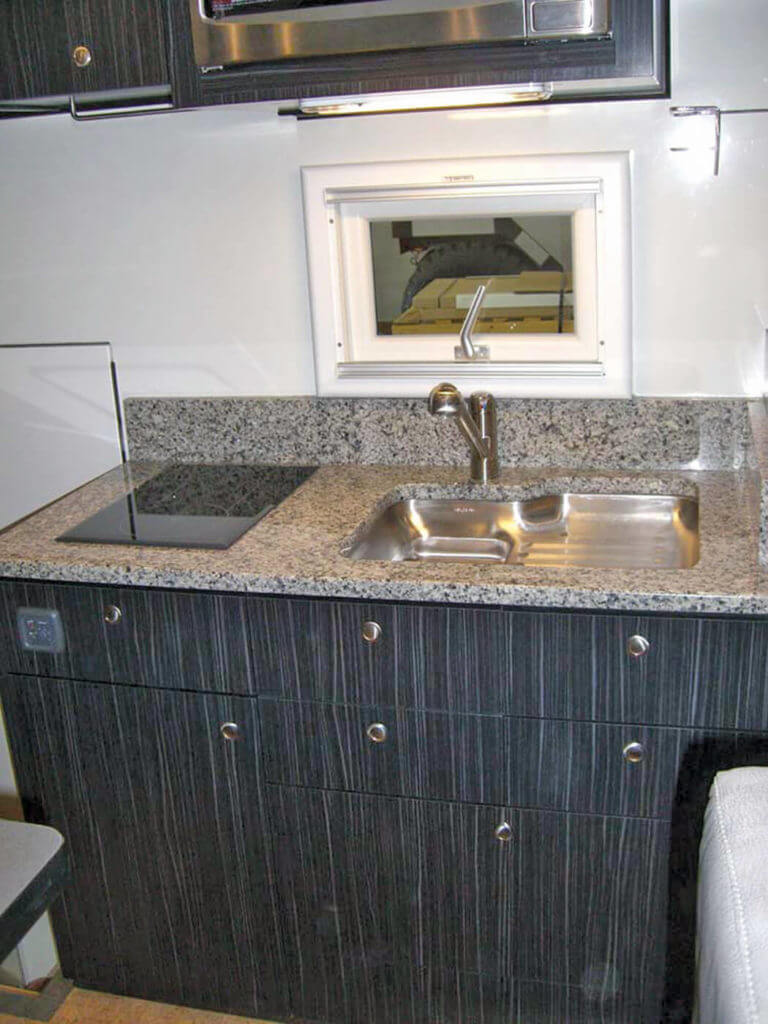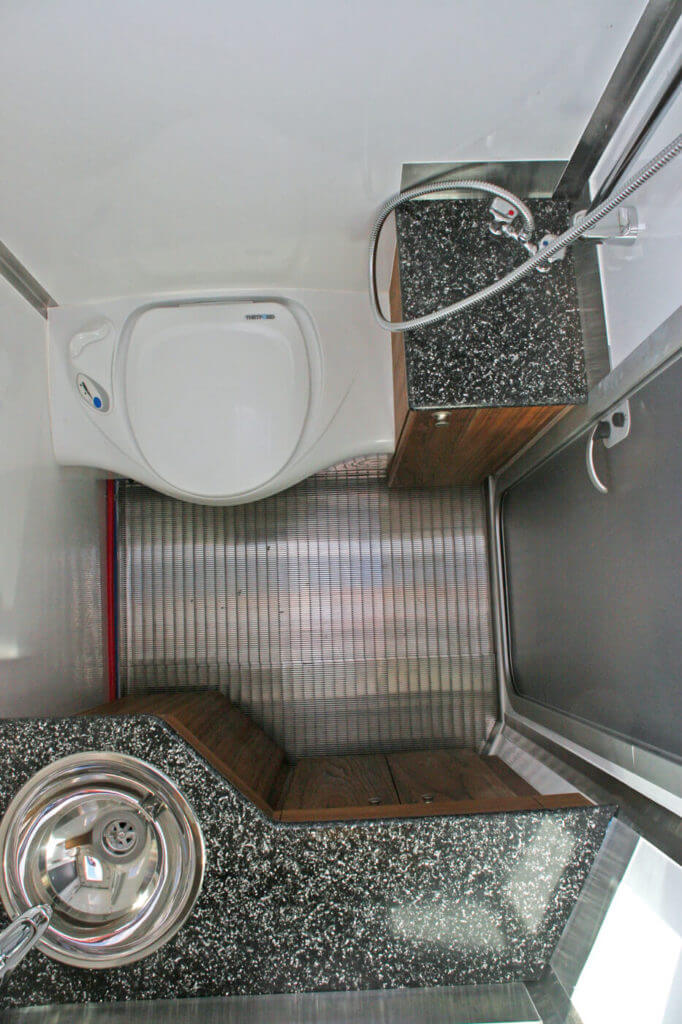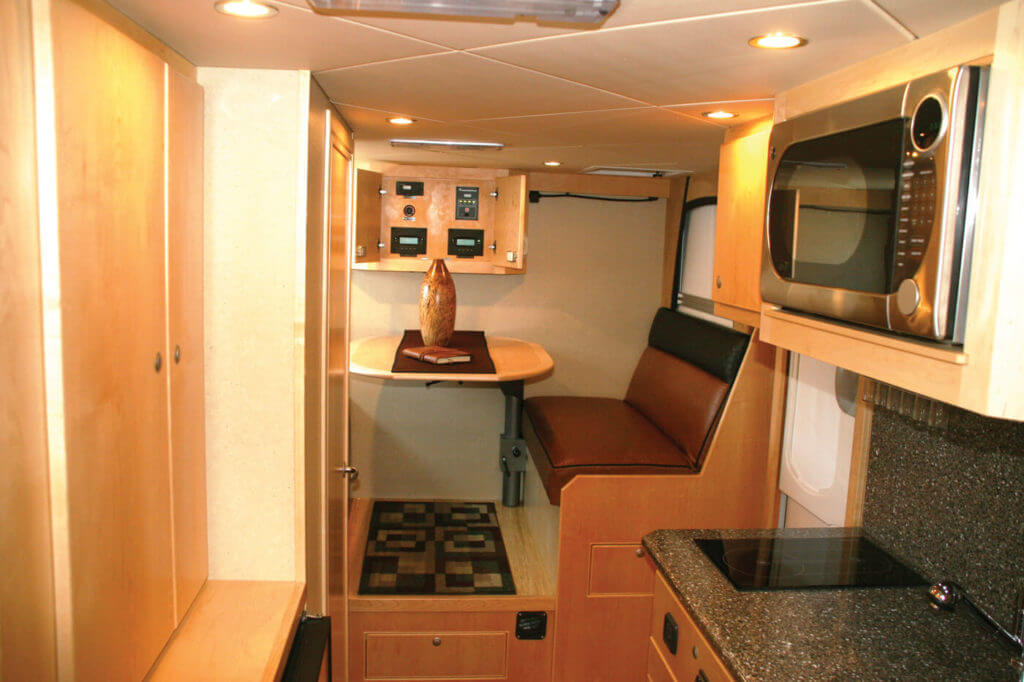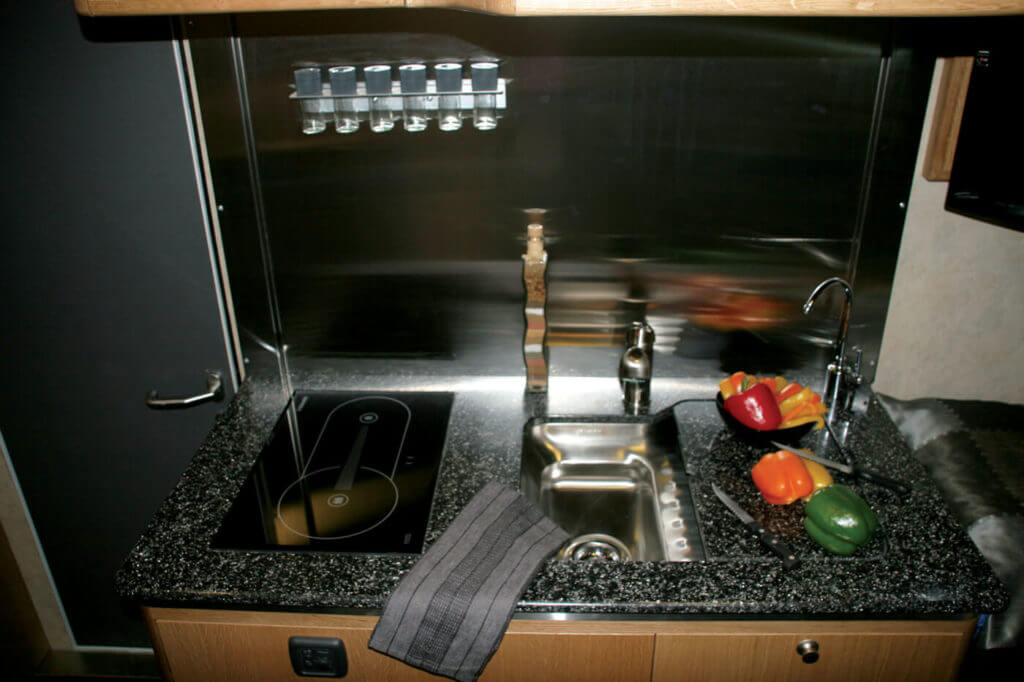If you’re going to bug out, go in style. Your car isn’t a great substitute for your home, but your house is not portable; thus, you’re leaving a gap in the survival reality of hitting the road with all the conveniences of home. Almost.
A great alternative is the Survival Basics off-road vehicle, a powerhouse of a machine that allows you to live independently thanks to its built-in solar panel, off-roading capability and expansion options.
WHAT IT IS
The Survival Basics is an adaptable expedition body that will fit a large variety of truck chassis. Survival Basics manufacturer Global Expedition Vehicles (GXV) custom builds expedition bodies from 10 feet to 20 feet in length, allowing you to take on just the size that you need for your bug-out requirements.
A concern for many survivalists is that their bug-out equipment may be fine for one climate, but it’s difficult to be prepared for all types of weather. But the decision on whether to bring snow tires or mud flaps is moot with the Survival Basics, because it’s extremely durable. It’s made using SCS body panels and marine-grade components, so the vehicle is not only comfortable, but it can withstand treacherous off-road routes and extreme weather conditions.
GXV completely takes care of installation on your supplied chassis, but if you don’t have a chassis, no worries; GXV will locate a chassis for your specific travel requirements. When built on a Mercedes Unimog chassis, this rugged vehicle can burn any mix of diesel fuel, including high- or low-sulfur diesel and any bio-diesel found in the world, making this a true go-everywhere vehicle.
MAKE IT YOUR VEHICLE OR GO HOME
As long as you have enough food and water packed in it, you could live in the Survival Basics indefinitely. This is thanks to the solar power system, which only needs four to five hours of sunlight each day to sustain all systems for 24 hours, says Rene Van Pelt of Global Expedition Vehicles. The only exception would be continued use of the optional air conditioner, which would either require more solar panels and batteries or a generator, she says.
Inside, is a host of components that you’ll need for your daily use of the Survival Basics. Some of these include electrical management system of solar panels, a solar charger and AGM batteries; a 120v inverter/charger, marine-grade wiring and AC and DC breakers; LED lighting; plumbing system with all PEX piping enclosed within the cabin envelope; a 125-gallon fresh water supply; a 23-gallon gray water poly tank and a water heater. Cold-weather comfort is provided by a cabin heating system and the kitchen has a refrigerator, stove, microwave/convection oven and stainless steel sink. The bathroom has a wet bath, shower and Thetford cassette toilet. The dining booth converts into a second sleeping area; and a queen-size bed with large storage area underneath is accessible from the outside. Many options and various finishes are available in addition to these basics.
The standard length of the vehicle is 15 feet, 8 inches, but the size is customizable from 10 feet through 19 feet—which is perfect, since you might be bringing the whole family on your trek.
The Survival Basics model is very versatile in that it can be sized to comfortably accommodate one person or up to four persons,” Van Pelt says. “As our vehicles are fully customizable, components can be added or upgraded to the level chosen by each individual client (i.e. battery, water, and fuel capacities).” The company will size the Survival Basics expedition body to fit various truck chassis from a Ford F-450/Dodge 4500 (16,500 GVW) up to class 7 trucks like the International 7500 or Freightliner M2 106 (33,000 GVW). Fuel capacity is based on the truck chassis to which the Survival Basics expedition body is fitted.
LOW SULFUR VS. HIGH SULFUR DIESEL FUEL
“By law, all diesel vehicles manufactured after 2007 are required to use ultra-low sulfur diesel,” says GXV’s Mike Van Pelt. “By law, in the U.S., our ultra-low sulfur diesel (ULSD) carries 15 particles per million (ppm) of sulfur for highway use. You may still purchase off-road diesel that ranges from 50 ppm and up,” he adds. “50 ppm is marked as low sulfur diesel. Countries that do not require ULSD have high-sulfur diesel which can carry as high as 2,000 ppm. Unless diesel fuel is marked as ‘ULSD’ or ‘LSD,’ it is the ‘old’ high sulfur diesel.”
It would not be uncommon in less advanced countries to have high-sulfur diesel with as much as 2,000 ppm, Van Pelt says. “The fuel would not have to be refined as much. Most countries are willing to accept this high sulfur content fuel to save on the cost of the product. It does not hurt their vehicles, only the environment, and, in fact, adds lubrication to the motor itself and allows the motor to run cooler.”
SPECIFICATIONS
The following are some of the most impressive features of the Survival Basics:
- Stainless/aluminum entry stair system, manual operation
- Two under body-lockable aluminum storage compartments (left and right), one of which contains a gray water tank
- Rear luggage compartment, with three-point lock
- Domestic skylight with integrated blinds and mosquito screen
- Stainless steel sink with single lever hot and cold water
- 12v with 120v systems, consisting of shore power plugs and interior outlets
- HVAC
Entrance Door/Storage Compartments
- SCS entrance and storage doors, 2.36 inches, integrated into the body walls
- Double seals with heavy-duty three-point lock
- Three-point stainless steel safety cylinder locks, keyed alike
- Stainless steel hinges on all doors
Kitchen/Galley/Dining
- Adjustable table
- Cushion covers: cloth
- High-quality white cabinets with maple trim
- Laminated countertops
- Ample overhead cabinetry/storage areas
For more information, view the full details at the Global Expedition Vehicles website.
Editor’s note: A version of this article first appeared in the 2013 print issue of American Survival Guide.


